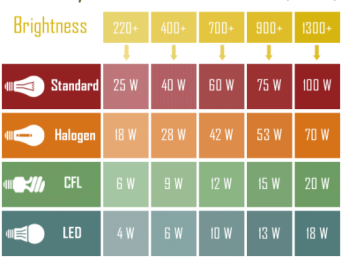Урок з англійської мови у 10 класі на тему "Energy saving.New Technology for the Home "
Topic : New Technology for the Home
Form : 10
Objectives:
- Students will be able to explore the benefits of new technology for the home
- Students will be able to practice key vocabulary on the topic.
- Students will be able to differentiate between efficiency and effectiveness.
Materials: the Internet, a laptop, a projector, video materials, worksheets.
Lesson plan
- Warm –up
Divide the board in 2 and write a word vertically in each half of the board.
Divide class into 2 teams. Show students the word. One student from each team, in turn, comes to the board and writes a word connected to the theme. The student’s word must include one of the letters from the teacher’s word.
Students have to write the word beginning with, ending in or including any of the letters around the vertical word.
E nvironment
N uclear power
E lectricity
R educe
G reenhouse gases
Industr Y
S olar power
A lternative
V olt
I nefficient
N atural gas
G eothermal power
- Idiom matching
Divide your class into three teams: Heat/ Light/ Water. Give four mixed idioms and their definitions to each team. Ask students to match them as quickly as they can and stick to the board. Discuss all of them in the class. Correct if it is necessary.
|
take the heat |
|
to take criticism and handle stressful situations. |
|
a dead heat |
|
when there is no single winner - two or more participants tie for first place. |
|
in the heat of the moment |
|
when you do or say something because you are too angry or excited to think properly. |
|
the heat is on |
|
when a situation is becoming more difficult and busy. |
|
the light of your life |
|
the person you love the most: |
|
to give (something) the green light |
|
to approve or allow something |
|
to be out like a light |
|
to fall asleep very quickly |
|
to see the light |
|
to realise something is the truth. |
not hold water |
|
a statement or belief has some flaws and is probably not completely true or correct |
|
keep your head above water. |
|
to try very hard to survive financially, or you are barely able to handle a lot of work which is almost too much |
|
in hot water |
|
in trouble, usually when somebody will be angry at you or you will be punished |
|
to test the waters |
|
to discover a little more about a situation before you go ahead and become very involved |
- Vocabulary practice
When the matching is finished ask your students to fill in the sentences with the idioms
- The boss has given my plan ________ so let’s start working.
- "Don't worry, if the project fails and the boss gets angry, I'll ________ for us."
- "The horse race finished in_________."
- I used a PC for years but in the end I ________ and bought a Mac.
- My boss gives me so much to do that I have to work weekends just to________.
- You better ________ before you fully commit to that plan.
- I was __ a bit of ______ with Janice last night when she found out I went to the movies instead of cleaning out the garage.
- "She was so angry that ___________she threw her pen at me! She apologized and we laughed about it later."
- "There are only 5 more days until the election, so _________."
- My daughter is ___________.
- I was so tired after running today, I __________.
- His argument just _________. It’s all based on emotions, not on facts.
IV. Energy consumption presentation
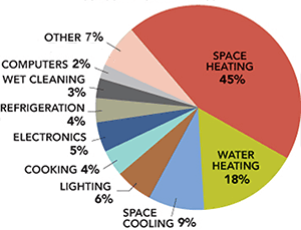 Tell your students that to feel comfortable at home we need light, water and heat. And to have them we need energy. Ask if they know how much energy is used in homes on different purposes as space heating and cooling, water heating, lightning and accomplishing household functions such as cooking and cleaning.
Tell your students that to feel comfortable at home we need light, water and heat. And to have them we need energy. Ask if they know how much energy is used in homes on different purposes as space heating and cooling, water heating, lightning and accomplishing household functions such as cooking and cleaning.
Present information about energy consumption in homes.
Remark that the data may vary from country to country but still heating and cooling are the biggest share of total energy consumption. That’s why it is obvious that making energy saving substantive requires more than just switching off lights. It is necessary to increase energy efficiency.
Explain the difference between effectiveness and efficiency.
Effective (adj.) – Adequate to accomplish a purpose; producing the intended or expected result.
Efficient (adj.) – Performing or functioning in the best possible manner with the least waste of time and effort.
The difference between effectiveness and efficiency can be summed up shortly. – Being effective is about doing the right things, while being efficient is about doing things right.
Give some examples:
The drug’s effectiveness is doubtful.
Burning wood on an open fire has efficiencies of only 15 -20 % compared to wood burning in stoves with efficiencies of up to 80-90%.
- Energy Guide Label Presentation
Tell your students that if they are interested in maximizing energy efficiency in their environment, there are some simple steps that can be taken to reduce energy consumption.
Present students Energy Guide Label.
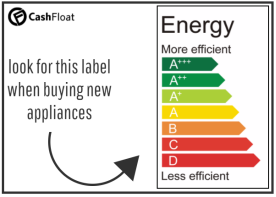 Energy Guide labels are present on all major appliances to help select the most efficient models. The more efficient the product, the less energy it needs and the more you get for your money. ‘A’ rated products are the most efficient and ‘G’ rated products the least efficient. Using less electricity is better for the environment and for our pocket.
Energy Guide labels are present on all major appliances to help select the most efficient models. The more efficient the product, the less energy it needs and the more you get for your money. ‘A’ rated products are the most efficient and ‘G’ rated products the least efficient. Using less electricity is better for the environment and for our pocket.
Ask your students to look at the table and analyze energy efficiency of the light bulbs.
Halogen lights and incandescents use up an enormous amount of energy.
Fluorescent light bulbs are much more energy efficient. They use 20% of the power that halogen bulbs do, while lasting eight times longer.
Swapping your old globes for fluorescent or LED lights can save you 80% on lighting bills.
- Reading
Tell your students that the way we interact with everyday objects in our home, like appliances, is changing. Our homes are becoming “smart”. A “smart home” is designed with the intention of making life easier for the people who live there. Offer students to take a look at a few possibilities of smart houses.
“Smart House”
- All around the house. Lights turn on and off automatically with your movements. The temperature in your home adjusts to maximize energy efficiency. Your parents receive alerts for all sorts of things: garage door open, stove left on, dog needs fed. Windows and doors trigger an alarm if they open unexpectedly. Even the curtains know when to open and close.
- In the bedroom. Lights slowly brighten when you want to wake up. The fan stays on until you go to sleep, then turns off to save energy. Nightlights know when you get out of bed and brighten your path to the bathroom.
- In the bathroom. Your shower automatically adjusts to your preferred temperature. The fan adjusts to ventilate the bathroom based on current humidity.
- In the kitchen. The microwave knows to start heating your breakfast when you step out of the shower. Your toaster gets a signal from the microwave to start making your toast. The refrigerator tells your parents when a food is spoiling and writes a grocery list when supplies get low.
- In the living room. The stereo plays your favorite playlist or a random greeting when you arrive, customized for each family member. The motion sensor sends alerts to your parents if there’s unexpected movement. Lights automatically dim and trigger your TV to turn on for family movie night. Your home theater knows your preferences and is programmed to play your favorites. The gaming system fires up when your friends arrive.
- In the basement. Moisture sensor alerts at the first sign of a leak. The washing machine and dryer automatically adjust based on the type of load.
- Outside. The garage door automatically opens and closes. The sprinkler system knows the forecast and only waters when rain isn’t expected. Outdoor lamps sense movement at night and light the way to the door. The mailbox tells adults when mail has been delivered. Your yard alerts you if the dog has left its designated area.
These are real technologies, coming soon to a home near you.
- Post-reading tasks
- Instruct your students to match the words in bold with their definitions
- to adjust
- humidity
- to get low
- to dim
- to trigger
- to fire up
- a leak
- to start a machine or computer program
- make or become less bright or distinct
- cause (a device) to function
- a hole in a container or covering through which contents may accidentally pass
- make or become less; diminish.
- alter or move (something) slightly in order to achieve the desired fit, appearance, or result
- atmospheric moisture , water in the form of very small drops in the air
2. Discuss
- What possibilities of “a smart house” are the most attractive to them?
- What options help save energy?
- Watching a video
Remark that no matter how smart and efficient houses are they still use a lot of energy to keep the lights on, cool the air, heat water, and power personal devices. There are, however, some buildings that strike a balance; or even tip the scales the other way! These are called zero energy buildings.
Instruct students to watch a video “What is a Zero Energy Building”
https://www.youtube.com/watch?v=FysJKq5yCfg
After watching the video ask some questions to check students’ comprehension:
1. What are zero energy homes? (Zero energy homes are homes that produce as much energy as they use over the course of a year)
2. What are the benefits of zero energy homes? (These homes have zero energy bills, affordable to build and operate, more reliable and comfortable than typical buildings and better for the environment)
- What happens when the weather conditions are not suitable for energy generation? (Homes draw energy from the electrical grid to meet their needs)
4. What happens when a home produces more energy than it uses?
(Can send their excess electricity back to the power company)
- Sum up
Finishing the lesson remind students what their opinion about energy saving was at the very beginning (Lesson1)
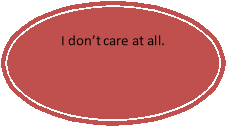

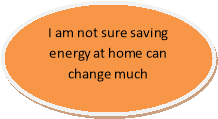
Ask whether they have changed their minds and why.
- Hometask
Give students the link https://www.youtube.com/watch?v=QwSv-DbR3Y8 and ask to watch the video “Going Green: Eco-Friendly Home Building Tips”
Students have to note some steps they can take during building to work towards an eco-friendly and energy-efficient home in the future. They may add their own ideas.
XI. Assessment
Worksheet 1
Fill in the sentences with the idioms:
- The boss has given my plan ________ so let’s start working.
- "Don't worry, if the project fails and the boss gets angry, I'll ________ for us."
- "The horse race finished in_________."
- I used a PC for years but in the end I ________ and bought a Mac.
- My boss gives me so much to do that I have to work weekends just to________.
- You better ________ before you fully commit to that plan.
- I was __ a bit of ______ with Janice last night when she found out I went to the movies instead of cleaning out the garage.
- "She was so angry that ___________she threw her pen at me! She apologized and we laughed about it later."
- "There are only 5 more days until the election, so _________."
- My daughter is ___________.
- I was so tired after running today, I __________.
- His argument just _________. It’s all based on emotions, not on facts.
Worksheet 2
Read the text:
“Smart House”
- All around the house. Lights turn on and off automatically with your movements. The temperature in your home adjusts to maximize energy efficiency. Your parents receive alerts for all sorts of things: garage door open, stove left on, dog needs fed. Windows and doors trigger an alarm if they open unexpectedly. Even the curtains know when to open and close.
- In the bedroom. Lights slowly brighten when you want to wake up. The fan stays on until you go to sleep, then turns off to save energy. Nightlights know when you get out of bed and brighten your path to the bathroom.
- In the bathroom. Your shower automatically adjusts to your preferred temperature. The fan adjusts to ventilate the bathroom based on current humidity.
- In the kitchen. The microwave knows to start heating your breakfast when you step out of the shower. Your toaster gets a signal from the microwave to start making your toast. The refrigerator tells your parents when a food is spoiling and writes a grocery list when supplies get low.
- In the living room. The stereo plays your favorite playlist or a random greeting when you arrive, customized for each family member. The motion sensor sends alerts to your parents if there’s unexpected movement. Lights automatically dim and trigger your TV to turn on for family movie night. Your home theater knows your preferences and is programmed to play your favorites. The gaming system fires up when your friends arrive.
- In the basement. Moisture sensor alerts at the first sign of a leak. The washing machine and dryer automatically adjust based on the type of load.
- Outside. The garage door automatically opens and closes. The sprinkler system knows the forecast and only waters when rain isn’t expected. Outdoor lamps sense movement at night and light the way to the door. The mailbox tells adults when mail has been delivered. Your yard alerts you if the dog has left its designated area.
These are real technologies, coming soon to a home near you.
Match the words in bold with their definitions
- to adjust
- humidity
- to get low
- to dim
- to trigger
- to fire up
- a leak
- to start a machine or computer program
- make or become less bright or distinct
- cause (a device) to function
- a hole in a container or covering through which contents may accidentally pass
- make or become less; diminish.
- alter or move (something) slightly in order to achieve the desired fit, appearance, or result
- atmospheric moisture , water in the form of very small drops in the air
Answer keys
Fill in the sentences with the idioms:
- The boss has given my plan the green light so let’s start working.
- "Don't worry, if the project fails and the boss gets angry, I'll take the heat for us."
- "The horse race finished in a dead heat."
- I used a PC for years but in the end I saw the light and bought a Mac.
- My boss gives me so much to do that I have to work weekends just to keep my head above water.
- You better test the waters before you fully commit to that plan.
- I was in a bit of hot water with Janice last night when she found out I went to the movies instead of cleaning out the garage.
- "She was so angry that in the heat of the moment she threw her pen at me! She apologized and we laughed about it later."
- "There are only 5 more days until the election, so the heat is on."
- My daughter is the light of my life.
- I was so tired after running today, I went out like a light.
- His argument just doesn’t hold water. It’s all based on emotions, not on facts.
Post-reading tasks
Match the words in bold with their definitions
- to adjust - f
- humidity - g
- to get low - e
- to dim - b
- to trigger - c
- to fire up - a
- a leak - d
- to start a machine or computer program
- make or become less bright or distinct
- cause (a device) to function
- a hole in a container or covering through which contents may accidentally pass
- make or become less; diminish.
- alter or move (something) slightly in order to achieve the desired fit, appearance, or result
- atmospheric moisture , water in the form of very small drops in the air

про публікацію авторської розробки
Додати розробку

